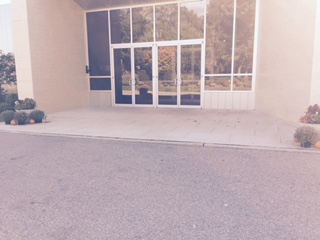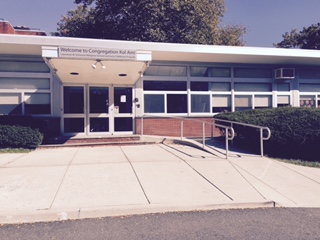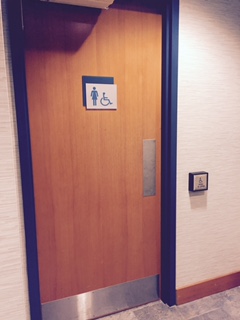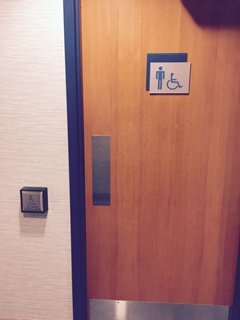Areas of Inclusion: Adults in Communal Life, Advocacy & Community Partnerships, Architectural & Physical Accommodations and Transportation, Autism, B’nai Mitzvah, Deafness, Early Childhood Education, General Inclusion, Mental Health, Religious School, Worship, and Youth Group, High School, and College Programming
About the Congregation
252 Soundview Avenue
White Plains, NY 10606
Number of Congregants: 710
Contact Information
Inclusion Programming
Does this congregation have an inclusion committee?
Yes
Developing Our Program
The clergy, executive director and executive committee saw a need in the community to do more inclusive work here at Congregation Kol Ami. After reaching out to the community, a team of people with experience in the field of Inclusion and/or a background in special needs (as a teacher, social worker, therapist, or a parent) started meeting, communicating, planning and implementing programs and positive changes. This began around 2008.
Number of people involved in the effort: 50
Involving People with Disabilities
The Co-Chairs of the Inclusion Committee have been able to pull in other congregants with specific expertise to address the different issues of inclusion as they arise. We have dozens of members who utilize our accommodations. At our heart we are an inclusive congregation in every way, valuing members with appreciation for their individual differences. In our application you will read about special initiatives by our Early Childhood Program and our Religious School. In addition, we would like to share that we have an Inclusion Committee currently chaired by Marci Frankenthaler and Beth Tomkiewicz. This committee meets with our Executive Director on a regular basis to review changes that could be made to ensure that we make possible full engagement in all worship services, programs and activities by all of our congregants. Just this year at the urging of our Inclusion Committee our seating was re-arranged in our main sanctuary and smaller chapel to better enable someone in a wheelchair to more comfortably sit among the rest of the congregation and for someone using a walker to more easily walk to a seat. Further, we provide hearing devices to ensure that adults with hearing difficulties are able to fully participate in our worship. It is also important to note then when our sanctuary was redesigned in 2012 the full inclusion of congregants with physical disabilities was of paramount importance in our planning. For example, a beautiful ramp affords someone in a wheelchair or using a walker easy access to the Bima. Further, our ark opens wide, again enabling someone in a wheelchair to wheel himself/herself into the ark as easily as another congregant might walk into it. Further, we are sensitive to, and fully supportive of, congregants challenged by mental illness. Through a partnership with Westchester Jewish Community Services (WJCS) we offer courses and provide free counseling services. Also through WJCS Shelanu, young Jewish adults ages 18–35 with Autism regularly worship with us and work with us in our Pantry. The work in our pantry provides these young adults many skills needed in an office environment and supports the development of social skills. Moreover, we have a robust Adult Education Committee, which brings innovative programming to Kol Ami. Through a partnership with Westchester Adult Jewish Education (WAJE) we offer a variety of courses covering issues of mental health and wellness designed to keep adults with mental illness involved in temple life in a positive way. Similarly, we are proud to be the home to an active AA group and new Al-Anon group enabling Jews to seek support within a temple as opposed to a church or community center. Lastly, we ensure our staff and our High Holy Day ushers are appropriately trained in proper etiquette when addressing someone with a disability. For example, we train our ushers to speak with the person in the wheelchair and not the person pushing the wheelchair. Similarly, we ask someone with a disability if he/she would like assistance, instead of assuming assistance is required.
Yad B'Yad (Hand in Hand) is our Synagogue-based initiative for teens with social, emotional, learning and cognitive challenges. This program was created to fill the void which currently exists for Jewish teens with developmental challenges in Westchester County. This is a population that desperately needs to learn a large repertoire of life and social skills—abilities that most teens understand and take for granted. In order to generalize these skills, teens with special needs need a lot of opportunities to practice these life and social skills, and a lot of arenas to practice them in—a need that secular schools can’t possibly have the time to fill. This program recognizes the importance of peer mentoring and inclusion not only for the teens with special needs, but also for the wonderful learning opportunity it provides for the typically developing teens. Yad B'Yad runs on Wednesday nights at the Kol Ami Religious School from 6:00-8:00pm. This is the same night as the religious school program for 7th-12th graders. This allows for a seamless inclusion opportunity for the peer-mentoring component of the program. We also encourage 10th grade students in our Yad B’Yad program to join our 10th grade Confirmation class for learning and to participate in the end of year service for Shavuot.
Involving People with Disabilities Links
Funding This Effort
We are able to use operating expenses and capital funds for larger projects.
Helpful Agencies & Organizations
We were able to utilize the talents of many of our congregants who donated their time to support this effort. We maintain a detailed database of all our members including their areas of expertise, and were able to utilize these talents in developing our inclusion policies.
Spreading Awareness About Our Work
Our policies of inclusion are clearly stated in our mission statement, monthly newsletter and weekly emails. In addition, the names of our Inclusion Committee Co-Chairs are listed on the weekly order of service. Our PR for temple-based events includes information regarding wheelchair accessibility, sign language interpretation availability, and the inclusion of everyone within the community. We publicize the "Live Streaming" of our Friday night services, which affords congregants who cannot travel to the synagogue the opportunity to watch services from their homes.
Process & Sharing
History, Materials & Processes that Guided Our Approach
We joyfully work closely with any young person and their family, no matter their abilities, to create their B'nai Mitzvah celebration. We have celebrated with students who could learn one sentence of Torah, or perhaps sing one song, and we prepare with them a full and joyous celebration. Everyone has a gift to share on the celebration of becoming Bar/Bat Mitzvah. It may be a Jewish Day School student who can easily chant the entire Parasha; it may be a child who does not communicate verbally, but cam hum a tune; or it may be that a happy smile and laugh is the gift a child brings. There are infinite ways to stand in front of your family and friends and share a proud moment from the heart. We will always do our best to ensure in advance that each student is only asked to share something of themselves that we are sure they can manage. Whether that is a 20-minute dissertation on their favorite medieval commentator, a clap of the hands, or a happy tear, we are honored and proud to celebrate with them.
On another note, for our youth we provide programming, speakers, Jewish texts, role models and opportunities for further group or individual discussion for people dealing with addiction, depression, etc.
In the Early Childhood Program we incorporate inclusion and attention to children with special needs in many ways.
Staff:
Our staff receives classes every year that help them observe and assist children with special needs. For example, we have had an Occupational Therapist (OT) present how to help children with their fine motor skills. This year the teaching staff will be taking a course from the Child Care Council called Creating Inclusive Environments. We also have a psychiatric social worker who consults with us throughout the year. The teachers can meet with her to discuss concerns about a child and hear her advice about child and parent management.
Our school also provides teachers with special needs equipment to use in their classrooms such as a rocking toy (which can help calm), bubble cushions (to assist with attention at morning meeting), and squeeze toys (for stimulation to help with walking on line).
Last year we had a child with hearing needs and special audio equipment. This year we will have two children with this equipment, which requires that the Head Teacher wear a microphone and speakers be set up in the classroom. We welcome and accommodate the needs of all the children who come to us.
For Children in the Classroom:
We consider it an important part of our early childhood curriculum to help the children understand that while another person may seem different, we are all really the same inside. We have books in our library and in the classrooms about children who are blind, hearing impaired, and have behavioral challenges such as Attention Deficit Disorder. In the imaginative play areas we have toy figures in wheelchairs and with seeing eye dogs.
In February, disability month, the 4’s and Pre-K children meet a speaker with a disability. One year we met a man in a wheelchair. Last year we met an army veteran with a care dog who had written a children's book. We also have performances by the special education puppetry group called Kids on the Block, which helps children understand about children with disabilities.
Outside Experts:
The ECP actively brings in our own outside experts to evaluate and assist us; and in addition we welcome all special service therapists who can help our children. In the 4's we bring in an OT consultant who sits with each child and gently evaluates their skills to determine if anyone needs extra help so they can get assistance before kindergarten. We bring in our psychiatric social worker to observe all the children at the school, from our First Friends un-separated playgroup through to our Pre-K class.
We also embrace all special service therapists such as OTs, Physical and Speech therapists, and Special Education Itinerant Therapists. We accommodate their schedules and work to assist them in any way we can.
We consider it part of our responsibility to our children and families that if we believe a child would benefit from additional support and services, we advocate for them with the parents and the public school system. To that end we work closely with all neighborhood public school Special Education departments who evaluate children for special services.
History, Materials & Process Links
Evidence of Successful Inclusion Efforts
A congregant wrote the following...
"I have a mental illness. I have bi-polar disorder. Not long ago, I was approached to write an essay that would address how I experience inclusion in my synagogue as a person who has a mental illness. It is as follows:
Inclusion has always permeated my entire relationship with my temple. My very first conversation with a local rabbi was about inclusion. Twenty-one years ago, I was faced with a dilemma. How could my ten-year-old son become Bar Mitzvah if as a single working parent I could barely pay the rent, no less pay dues? I posed that question to the rabbi. Her reply was simple. “Just because you are poor is not a reason that should prevent you from being part of a Jewish community.” And so it began.
My son attended Hebrew school and I started to go to the Saturday morning Sabbath service held in the chapel. Years of social isolation began to fade, as I was welcomed into the congregation, a devoted group of forty to sixty Jews that eventually became an extended family. It was there that I reconnected with a sense of spirituality.
In the summer of 1993, after years of struggling with an undiagnosed mental illness, I became suicidal and I had to be hospitalized. Saturday mornings at my synagogue had become an important touchstone for me. The service became a piece of my recovery. Every Saturday morning at 11:45, I knew my name was being announced during Mi Shebeirach. I received get-well cards, had a “pen pal” and spoke with the rabbi every Sabbath afternoon. Although we were separated by hundreds of miles for a month, I was still included in the life of my synagogue as if I was physically present. It was a powerful relationship. I was released from the hospital on Erev Rosh Hashanah. The next day I celebrated the New Year at synagogue fully aware that it was not just a new year, but also the start of a healthy healing time of my life.
In January 1994, my son became Bar Mitzvah. The service was held in the chapel where four generations of my family gathered as well as friends and my extended family, the congregation. The ceremony was all I hoped it would be and the potluck luncheon that followed was the generous gift of the congregation. Initially, I felt ashamed that I lacked the means to throw a big celebration. However, many congregants expressed their gratitude that they played a part in making the day special for us. Once again I felt that great sense of inclusion.
After two years of study with a group of adults, 2001 became the year I experienced my own Bat Mitzvah. It was a rite that was not offered to me when I was thirteen. Becoming Bat Mitzvah was a milestone in my life and it marked another step in my full inclusion in the Jewish community.
It’s been twenty-four years since I became a congregant at my synagogue. Today, I continue to attend Saturday morning services and I have become a regular at the study preceding the service. I share my views and it is frequently as a person who happens to have a mental illness. There is no stigma here. As always, my synagogue embraces me fully. Here is a place of total inclusion.
Today I am very grateful that for many years now, with therapy and medication, I have led a fully satisfying life which includes my loving family, a group of devoted friends, an active social life, my graduation from college, my own successful business and of course a strong connection with my Jewish community."
Evidence of Changing Attitudes
Our Inclusion Committee was created and the programs identified were implemented because we recognized the importance of enabling people with differences to fully participate in ALL Kol Ami activities. Nevertheless, we recognized, and have achieved, the need for greater awareness and sensitivity. Training has resulted in people with disabilities being treated with more respect and abilities are celebrated. Further, we realized that despite tight operating budgets, there is so much we can do to make Kol Ami a more inclusive community.
How We're Using and Sharing the Disabilities Inclusion Learning Center
Our Inclusion Committee chairs and our Assistant Executive Director share the responsibility to review the Disabilities Inclusion Learning Center website to identify and share new resources with our clergy, educators, and lay leaders as appropriate. Further, the subject of Inclusion is now a standing agenda item for the weekly meeting of the Clergy and Senior Staff.
Future Inclusion Efforts
We are in the process of examining potential grant opportunities to enable us to pursue initiatives, which would allow us to become more inclusive with our very diverse Jewish community. Further, we are awaiting a list of recommendations from our Inclusion Committee, which we will then prioritize for implementation as our budget permits. Of utmost importance is that we continue to strengthen an environment where all of our congregants can feel like they are a part of our Jewish community while at the same time, creating a kinder, more compassionate community and to make Kol Ami a known entity for people with disabilities.






